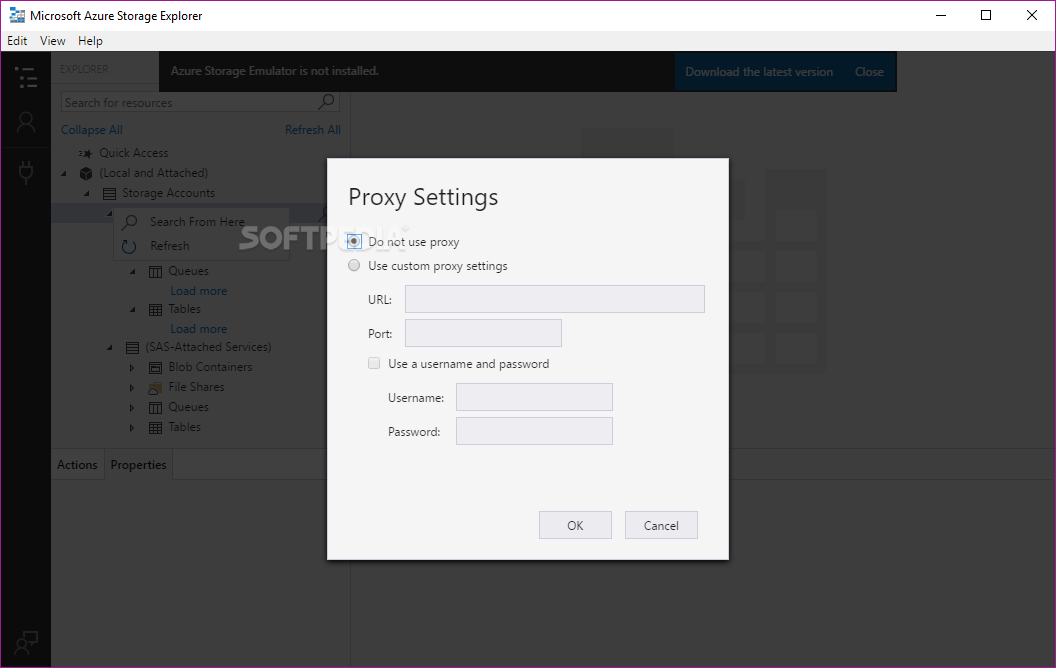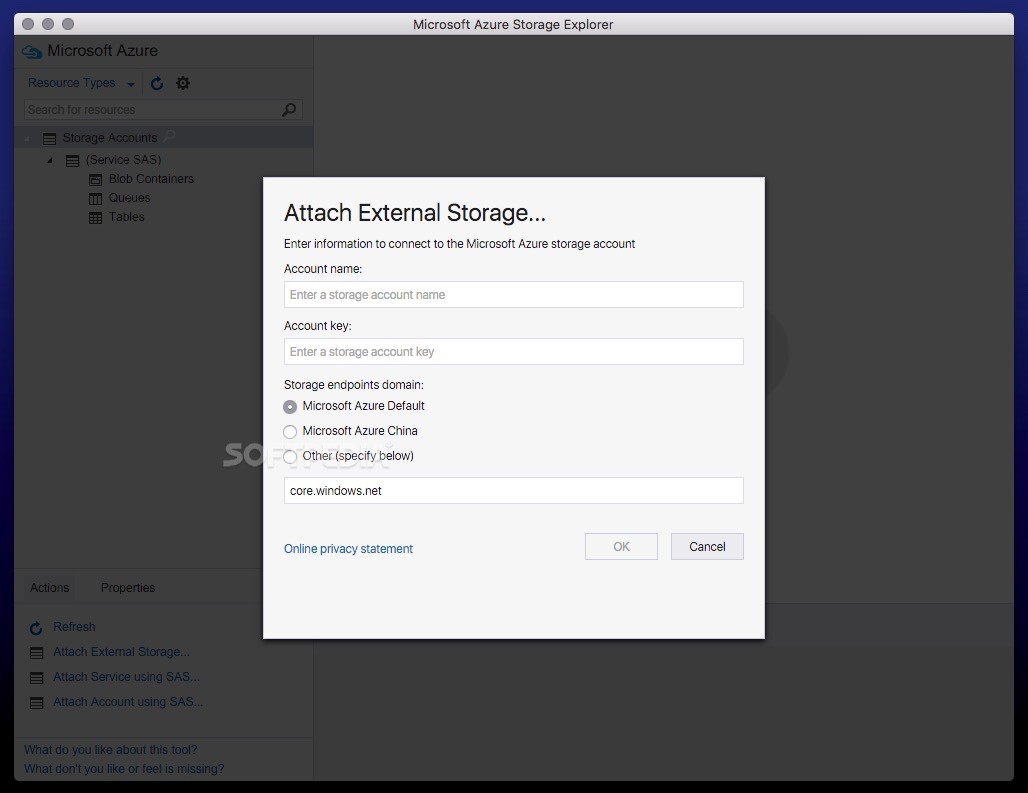

- #Microsoft azure storage explorer add subfolder software
- #Microsoft azure storage explorer add subfolder windows
#Microsoft azure storage explorer add subfolder windows
With Azure File Sync (preview), shares can be replicated on-premises or in Azure and accessed through SMB or NFS shares on Windows Server. Placing your File server somewhere and get your files to the cloud. And I guess you all have Ideas where you could use AFS. NET Core 3.Finally Azure File Sync is there in public preview, for the last months I had the pleasure to work with the Azure File Sync team and tested the product and thought about some great ideas where Azure File Sync (AFS) could be useful. Creating Schedule Driven Windows Service in.Using ProxyKit to Simulate IIS Rewrite Rules.Materials I used to prepare for AWS Certification.The last thing is to add connection string to app.config: Īnd that is all there is to it, folks. I often use this technique in my coding, actually.

To have uniform handling I used ExecuteXXX method inside my blob manager. Very easy now, and I can even create a utility and upload entire ClickOnce folder as part of the build process. Var success = manager.UploadDirectory( "test") I can call it in the following way: var manager = new BlobManager( "CloudStorage") Private bool ExecuteWithExceptionHandlingAndReturnValue(Action action)Īs you can see above, the main method I am using is UploadDirectory. Private void ExecuteWithExceptionHandling(Action action) UploadDirectory(directoryInfo.FullName, containerName, prefix) Prefix = prefixAzureFolderName + "/" + prefix Var subFolders = folder.GetDirectories() įoreach (var directoryInfo in subFolders) PutBlob(containerName, blobName, File.ReadAllBytes(fileInfo.FullName)) If (! string.IsNullOrEmpty(prefixAzureFolderName))īlobName = prefixAzureFolderName + "/" + blobName Var folder = new DirectoryInfo(sourceDirectory) Private bool UploadDirectory( string sourceDirectory, string containerName, string prefixAzureFolderName) Return UploadDirectory(sourceDirectory, containerName, string.Empty) / True if successfully uploaded public bool UploadDirectory( string sourceDirectory, string containerName) / /// Uploads the directory to blobl storage /// /// The source directory name.

ReturnValue = containers.Any(one => one.Name = containerName) IEnumerable containers = _blobClient.ListContainers() / True if conainer exists public bool DoesContainerExist( string containerName) / True if contianer was created successfully public bool CreateContainer( string containerName) / /// Creates the container in Azure blobl storage /// /// Name of the container. Return ExecuteWithExceptionHandlingAndReturnValue(ĬloudBlobContainer container = _blobClient.GetContainerReference(containerName) ĬloudBlob blob = container.GetBlobReference(blobName) / public bool PutBlob( string containerName, string blobName, byte content) / /// Updates or created a blob in Azure blobl storage /// /// Name of the container. _blobClient.RetryPolicy = RetryPolicies.Retry(4, TimeSpan.Zero) _blobClient = _account.CreateCloudBlobClient() public BlobManager( string connectionStringName) / /// Name of the connection string in app.config or web.config file. / /// Initializes a new instance of the class. Private readonly CloudBlobClient _blobClient Private readonly CloudStorageAccount _account / /// Blob storage manager class /// public class BlobManager Now, with this in mind I can write a class that can upload a folder to blob storage. On another note, there are many Azure browser that are aware of the forward slash and will on the fly convert the blobs to look like directory structure. Even through the rest looks like folder structure, it is really a single blob with the name of “2/2.txt”. Where xxxx is my account name on Azure and test is the container name. You see where I am going now with it? We just just come up with clever blob names, and as far as ClickOnce installer is concerned, it is still pulling up file from path such as Luckily, Azure blob storage supports forward slash (“/”) in blob names. ClickOnce structure is more complex of course. Azure blob storage does not really support directory structure, it just supports single level of containers, then all other files (content) goes into those containers via key/value pairs. I decided to host ClickOnce on Azure as well.
#Microsoft azure storage explorer add subfolder software
I was recently working on a ClickOnce application, that was part of a large business software solution hosted on Azure.


 0 kommentar(er)
0 kommentar(er)
